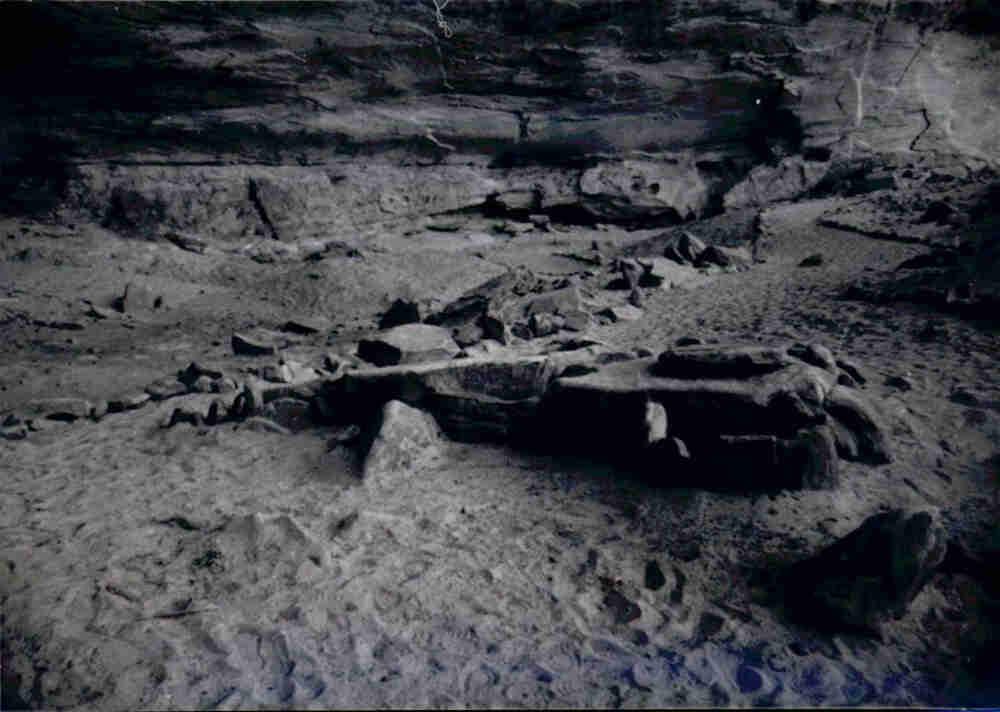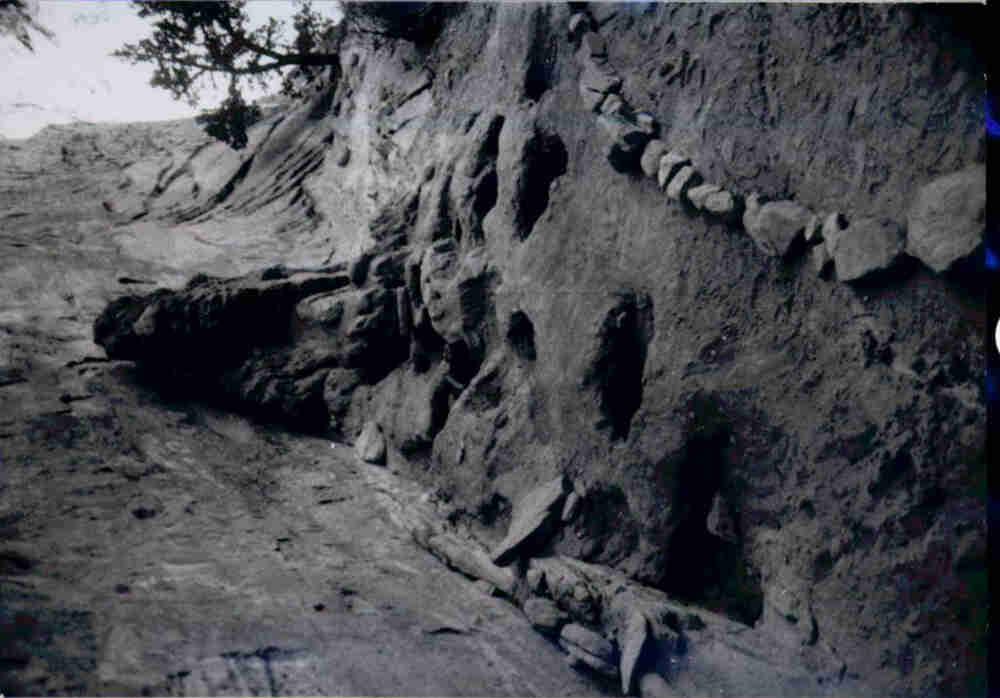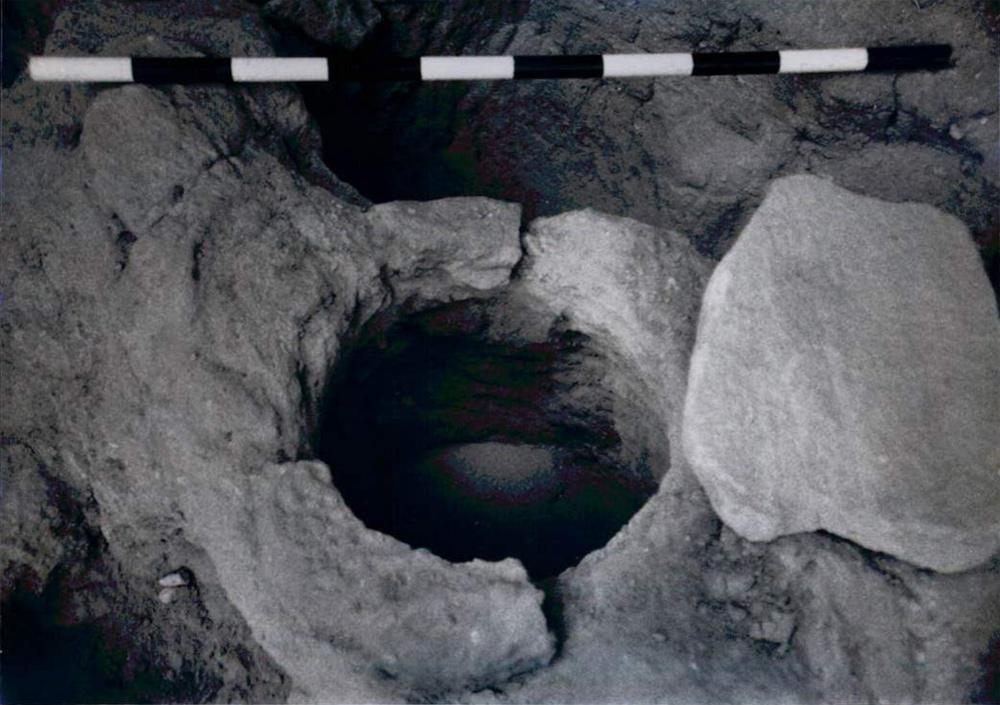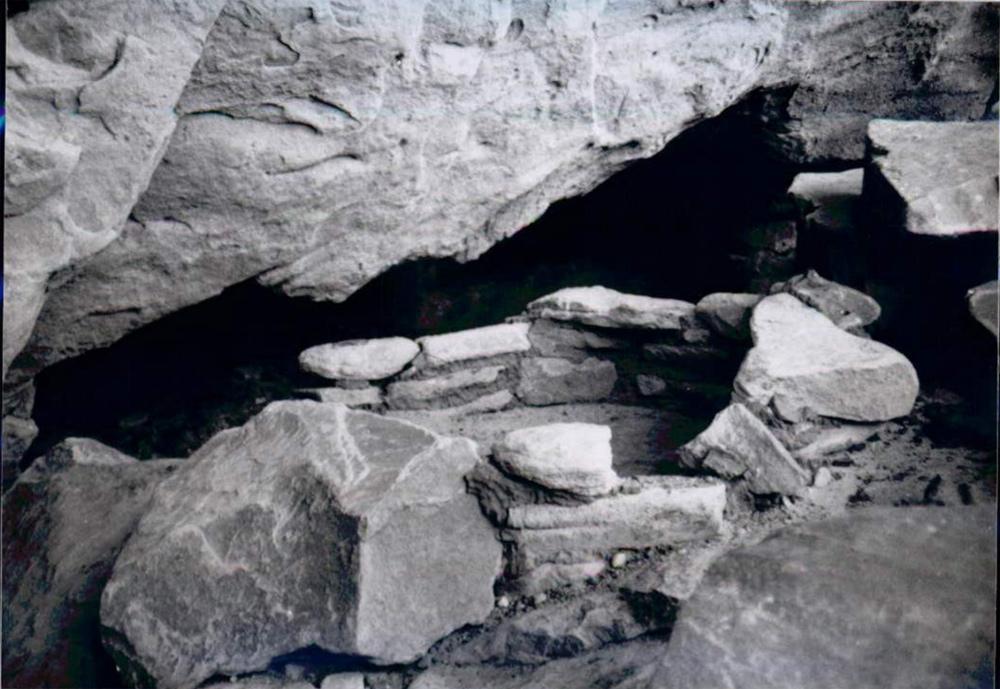Mantle's Cave
Full Article
Mantle’s Cave is the most important Fremont period archaeological site excavated in northwestern Colorado. Artifacts recovered from the cave were instrumental in defining the Fremont culture. Because the cave is dry, artifacts that are not usually seen at archaeological sites were preserved and show the great diversity of tools, food, and clothing items used by these prehistoric people.
Mantle’s Cave is a large rock shelter about 400 feet above the Yampa River in the Castle Park area of Dinosaur National Monument in northwestern Colorado. The cave is about 1,000 feet wide and 130 feet deep and has a very high ceiling. It is dry inside all year and, because it faces north it remains cool during the summer months, making it ideal for the preservation of wood, bone, plant, hide, fur, and feather artifacts that typically do not survive natural decomposition. The survival of these ancient artifacts gives us a more complete picture of how the Fremont people lived nearly 1,000 years ago.
First Discoveries
The cave is named for Charles and Evelyn Mantle, who ranched nearby and discovered the cave sometime before 1921. The cave contained many visible prehistoric stone and earthen storage pits, some of which Evelyn Mantle excavated. Archaeologists first got to know the cave in 1933, when it was visited during the Penrose-Taylor Expedition from Colorado College and the Fountain Valley School. They mapped the site and uncovered pottery, basketry, buckskin, corn, and squash. A few year later, fishhooks, snares, and netting were found in the cave. Mantle’s Cave became part of Dinosaur National Monument when the monument was enlarged in 1938.
In 1939 and 1940, the University of Colorado Museum did extensive excavations under the direction of Charles Scoggin. They excavated storage pits and a large amount of the cave floor. Most of the storage pits were empty, but a wide variety of artifacts were found in some of the pits and in other places throughout the cave. Scoggin was killed during World War II before he was able to complete his excavation report. Robert Burgh, also with the University of Colorado Museum, took up Scoggin’s work. Burgh returned to the cave to do additional excavations in 1947 and 1948.
As is typical of prehistoric sites, chipped stone flakes and some stone tools were found, including blades, a drill, and projectile points. Manos, or stones used for grinding, and what could have been either a metate or stone paint palette were also found, indicating food processing and possible paint decoration, which was further indicated by red and yellow ochre. A small amount of plain grayware pottery was also found. These artifacts indicated that the site was used only for brief camping episodes, probably when items were cached in or retrieved from the storage pits.
Food, Clothing, and Tools
Other items found in the cave were fragile, perishable items that typically do not survive and give a fuller picture of the dynamic nature of the region’s prehistoric residents’ way of life. Food items included grass seeds, dried and pulverized insects, bison and other animal bones, pinyon nuts, fruit seeds, digging sticks, squash and pumpkin rinds, beans, and corncobs, kernels, and husks, indicating consumption of both gathered and cultivated plant foods. Fishhooks, arrow points and wooden arrow shafts, as well as snares and nets, demonstrated the range of hunting techniques used by Fremont-era people. Portable containers included a burden basket and other basketry fragments, buckskin pouches, a grass medicine bag, and a twine bag; lumps of pine resin were found that might have been melted to provide weatherproofing.
Clothing items included buckskin sandals or moccasins, rabbit-fur cloth, and a juniper-bark robe; bone awls used to manufacture clothing or bags from hides were also found. Matting of all sorts was found, made from juniper bark, reeds, grass, and willow; human hair may have also been used as a weaving material. Juniper bark was used to make rope, and a piece of a cradle made from reeds was also found. Bone and juniper berry beads, porcupine quills, and feathers may have been used for adornment or decoration. Gaming pieces and slate dice are representative of recreation.
Other tools included a rodent tail brush, a deer antler gouge, and a wrench made from a bighorn sheep horn that was used to straighten arrow shafts. A large bird talon may have had ceremonial use. The most spectacular find was a bag containing ceremonial items. These were a headdress made of orange and black tail feathers from the red-shafted flicker and lined with ermine fur as well as a butterfly pendant, slate beads, a quartzite blade, feather bundles, grass twine, a buckskin thong, an obsidian flake, a corn kernel, and a bean.
Conclusions
In examining the artifacts from Mantle’s Cave, archaeologists recognized that many came from a culture that made baskets, had limited pottery, and had a well-developed agricultural tradition. Familiar with the Formative (agricultural) cultures of the Four Corners area farther south, archaeologists were convinced that the people were part of what is known as the Basketmaker tradition. In the 1960s, enough information had been gathered about the Formative period in northwestern Colorado and north-central Utah to conclude that a culture similar to the Ancestral Pueblo, but very different in many respects, was present in the region that archaeologists named the Fremont.
The artifacts from Mantle’s Cave were very important in defining the Fremont culture. Mantle’s Cave was excavated before radiocarbon dating came into use. In recent years, radiocarbon samples have been processed that confirm the Formative age of most of the artifacts, with dates ranging from AD 530 to AD 1255. In addition, an earlier hunter-and-gatherer period known as the Late Archaic, is also represented in the cave, dating between about 1771and 1410 BC.
In 1988 and 1989, the storage pits were mapped and stabilized so that they could continue to be enjoyed by visitors. At that time, it was found that thirty-six of the fifty-three storage pits excavated in the cave could still be seen. Mantle’s Cave was listed on the National Register of Historic Places in 1994 because of its importance to our understanding of the Fremont culture.




























